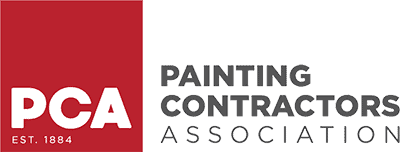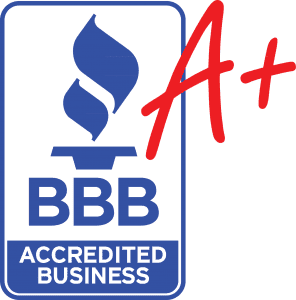What Really Happens in a Day with Our Painting Crew?
When most people picture a painting crew, they imagine a few workers rolling fresh color onto walls. Simple, right? Not exactly. A professional painting day involves far more than brushes and buckets. It’s a structured process with prep, technical product use, safety checks, cleanup, and quality inspections. Every step matters.
A painting crew’s workday isn’t glamorous, but it is deliberate. From the moment we clock in to the final walkthrough, each action is designed to protect your property and deliver a flawless finish that lasts.
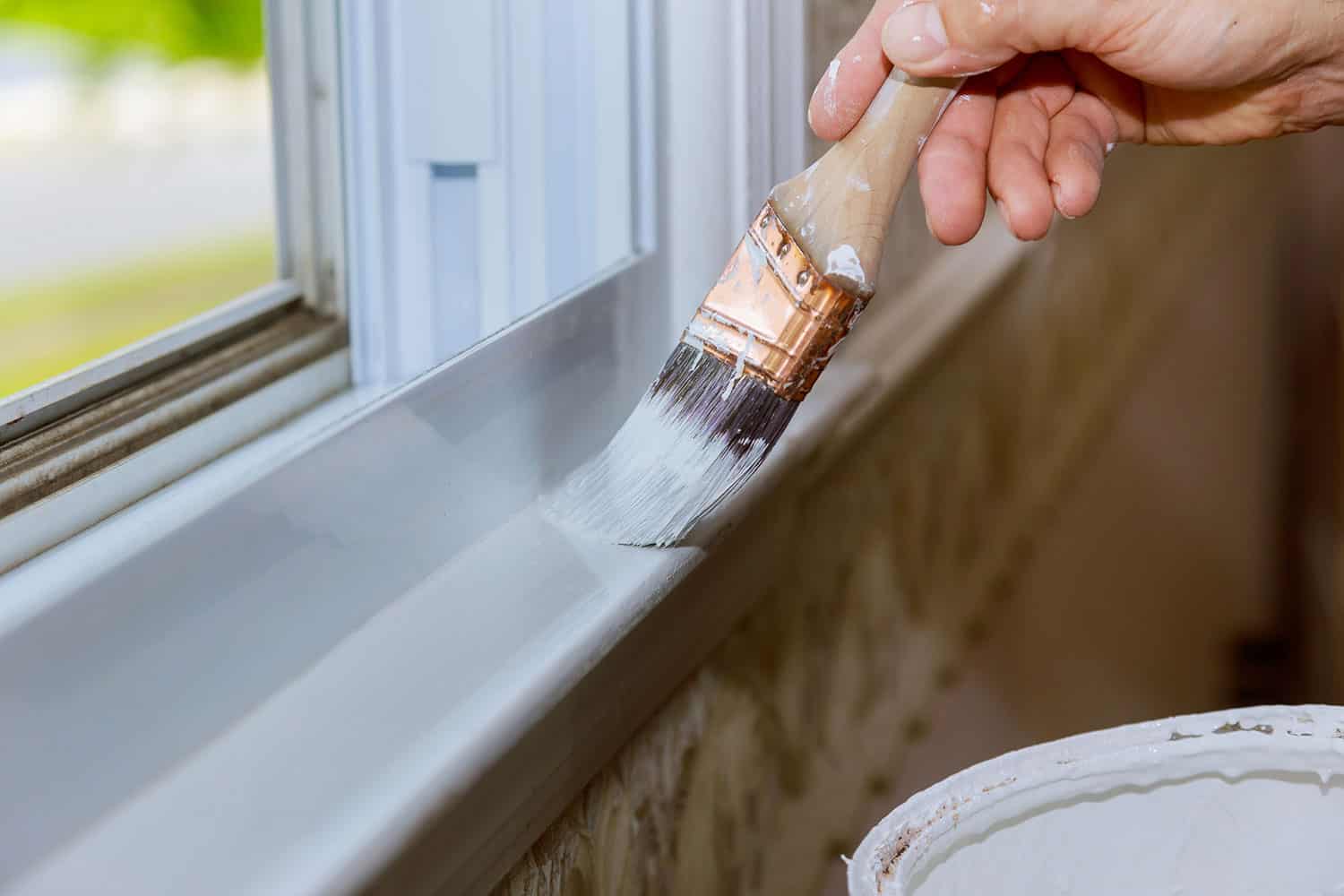
Clock-In and Jobsite Arrival – First Impressions Matter
Our crews typically arrive on-site between 7:30 and 8:00 AM. The lead painter, often called the foreman, starts the day with a quick scope and safety briefing. Every worker knows their tasks before unloading tools.
Equipment comes off the trucks in order of use: ladders, drop cloths, rollers, sprayers, caulking guns, and sanding tools. Before a single wall is touched, we focus on protecting the property. Landscaping gets covered with breathable tarps, furniture is moved and wrapped in plastic, and flooring is shielded with heavy-duty drop cloths.
A big question homeowners ask: “Will painters damage my property or leave a mess?” The answer is no. A professional crew builds protection into the very first step of the workday.
Products we rely on at this stage include:
-
Heavy-duty canvas drop cloths that don’t slide like plastic.
-
3M masking systems for precision coverage.
-
Festool HEPA vacuums for dust control.
This early setup not only keeps your home safe but also sets the tone for a job run with professionalism from start to finish.
Surface Prep – The Hidden Work That Determines Quality
Here’s the truth: 60–70% of a painting crew’s day is spent on surface prep, not applying color. Prep is what determines whether paint lasts a few years or a full decade.
For exteriors, prep often includes pressure washing, scraping old paint, sanding rough surfaces, caulking gaps, and priming bare areas. In Castle Pines, where humidity fluctuations can stress surfaces, proper priming and sealing are non-negotiable.
For interiors, prep may involve patching drywall holes, sanding uneven joints, cleaning walls, and priming stained areas.
Common prep materials include:
-
Primers: Sherwin-Williams ProBlock, Zinsser Bulls Eye 1-2-3, Benjamin Moore Fresh Start.
-
Caulks: OSI Quad Max for exteriors, SherMax for interiors.
-
Patching compounds: Ready Patch for wood, 3M Patch Plus for drywall.
Homeowners often wonder why prep adds so much to the cost. The answer: without it, paint adhesion fails. Cracks reappear, peeling starts early, and moisture seeps in. A professional painting crew takes the extra time to prep because skipping it isn’t saving—it’s sabotaging.
Cutting In, Rolling, and Spraying – Paint Application Unfiltered
Once surfaces are prepped, the fun part begins. But even here, there’s structure. Crews decide whether to roll, brush, or spray based on the surface and product.
Cutting in comes first—carefully edging around trim, ceilings, and corners with precision brushes. Then rolling begins, using nap thickness matched to wall texture. On exteriors, sprayers like Graco Pro210ES allow for even coverage, but only after everything nearby has been masked with precision.
A question we hear often: “Will you really do two coats, or just cut corners?” The honest answer is two coats. One coat rarely provides full coverage or durability. Manufacturers like Sherwin-Williams and Benjamin Moore even void warranties if recommended coats aren’t applied.
Preferred paints we use include:
-
Sherwin-Williams Duration and Emerald.
-
Benjamin Moore Aura and Regal Select.
-
PPG UltraLast for high-traffic interiors.
Brushes and rollers matter, too: Purdy brushes and Wooster rollers leave smoother finishes than discount alternatives. The tools and coatings work together to create a result that looks crisp today and holds up years from now.
Midday Coordination – Crew Efficiency Without Wasting Time
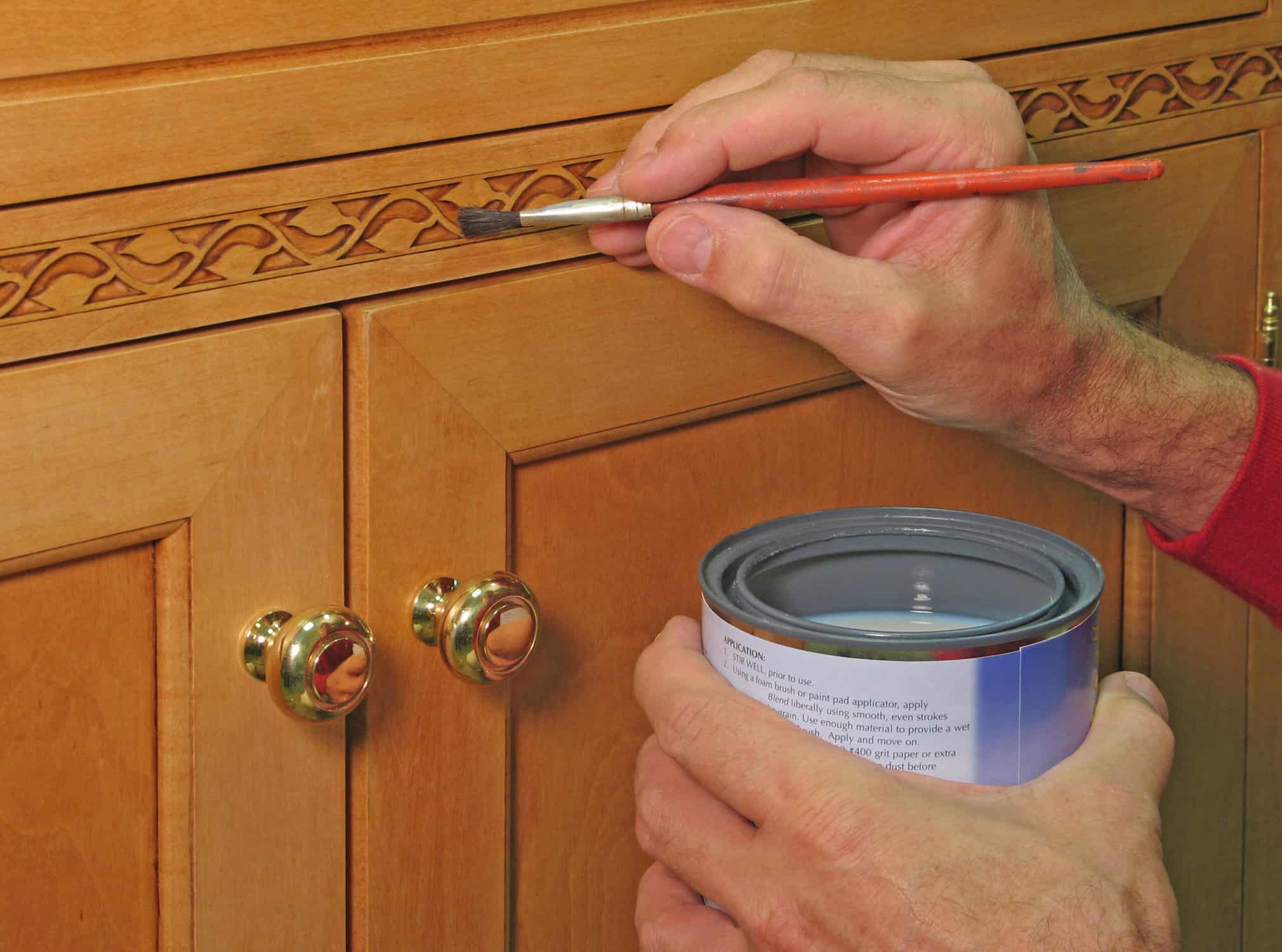
Painting crews look fast, but speed is about coordination, not rushing. While one painter cuts in edges, another rolls the walls. A third may spray ceilings or doors. The foreman tracks progress and keeps communication flowing between workers and the client.
Drying times are factored into scheduling. For example, the first coat may dry during lunch, ensuring no downtime. OSHA regulations also mandate breaks, so a professional crew balances efficiency with safety.
This choreography is why professional jobs finish on schedule. What might take a DIY homeowner three weekends can often be completed by a crew in three days.
Cleanup Protocols – Leaving the Site Better Than We Found It
Cleanup isn’t an afterthought—it’s an integral part of the workday. Each day ends with tool cleaning, waste disposal, and site reset.
-
Daily cleanup: brushes are washed, rollers wrapped, paint cans sealed, floors vacuumed.
-
End-of-project cleanup: masking tape removed, furniture unwrapped, landscaping tarps lifted.
Paint waste is handled properly. Leftover paint is labeled and stored for clients, while empty cans are disposed of according to EPA regulations.
Eco-friendly practices matter, too. Crews often use biodegradable cleaners and reusable cloths. A job isn’t considered finished until the site is as clean—or cleaner—than when we arrived.
Final Walkthrough and Punch List – Ensuring Satisfaction
At the end of the project, the foreman invites the client for a walkthrough. Together, we inspect every wall, trim edge, and ceiling. Any touch-ups are noted on a punch list and resolved immediately.
But what if you notice something later? Professional painting services include warranties. In our case, clients in Castle Pines, CO receive documented before-and-after photos, plus written guarantees. That peace of mind isn’t something you get from unlicensed or cheap contractors.
What Customers Don’t See – Behind the Scenes of Professional Painting
A lot happens before a painting crew even sets foot on your property. Materials are ordered in advance, weather forecasts checked, and crews scheduled with backup contingencies.
Behind the scenes, painters undergo OSHA training, lead-safe certification, and safety refreshers. Liability and insurance coverage protect both workers and clients if something unexpected occurs.
These background efforts don’t show up in your living room, but they’re why reputable companies deliver consistent, safe, and high-quality work every time.
Why Hiring a Professional Painting Crew Pays Off Long-Term
Some homeowners consider DIY or the lowest bid, but the savings are short-lived. Poor prep or cheap paint usually means repainting in 2–3 years. Professional jobs, done with premium products and skilled application, can last 8–12 years.
Here’s a comparison:
| Painting Option | Upfront Cost | Expected Lifespan | Long-Term Value |
|---|---|---|---|
| DIY with discount paint | Low | 2–3 years | Frequent repaints, uneven finish |
| Cheap contractor | Medium | 3–5 years | Higher risk of paint cracks and peeling |
| Professional crew with premium products | Higher upfront | 8–12 years | Lower long-term cost, better aesthetics |
In short: the crew you hire determines whether you’re repainting in a few years or enjoying a flawless finish for a decade.
People Also Asked
What do professional painters do in a day?
They prep, protect, paint, clean, and inspect. Most of the day is spent on prep and detail work, not rolling color.
How long does it take a crew to paint a house?
A typical 2,000 sq. ft. home takes 3–5 days, depending on prep needs, weather, and surface conditions.
Do painters really do two coats?
Yes. Two coats are standard to ensure full coverage and durability. One coat is rarely enough for professional-grade results.
How messy is a painting crew?
Not messy at all if you hire pros. Drop cloths, masking systems, and daily cleanup keep dust and paint splatter under control.
How do I know if my painting crew are cutting corners?
Ask about prep, number of coats, and products used. If they avoid details or offer one-coat guarantees, that’s a red flag.
What kind of paint do professionals use?
Contractor-grade coatings such as Sherwin-Williams Duration, Benjamin Moore Aura, or PPG UltraLast—formulas not always sold at big-box stores.
Will the painting crew move my furniture or should I?
Most crews handle moving and protecting furniture, though fragile or valuable items are best relocated by the homeowner first.
How do painters make sure lines are straight?
By combining skillful brush technique with high-quality tools and masking systems.
What happens if it rains during an exterior painting project?
Work pauses. Professional crews plan around weather and reschedule to ensure proper drying and adhesion.
How do painting crews keep projects on schedule?
Through crew coordination, task division, and foreman oversight. Efficiency comes from planning, not rushing.
A Transparent Look at a Painting Crew’s Day – No Filters
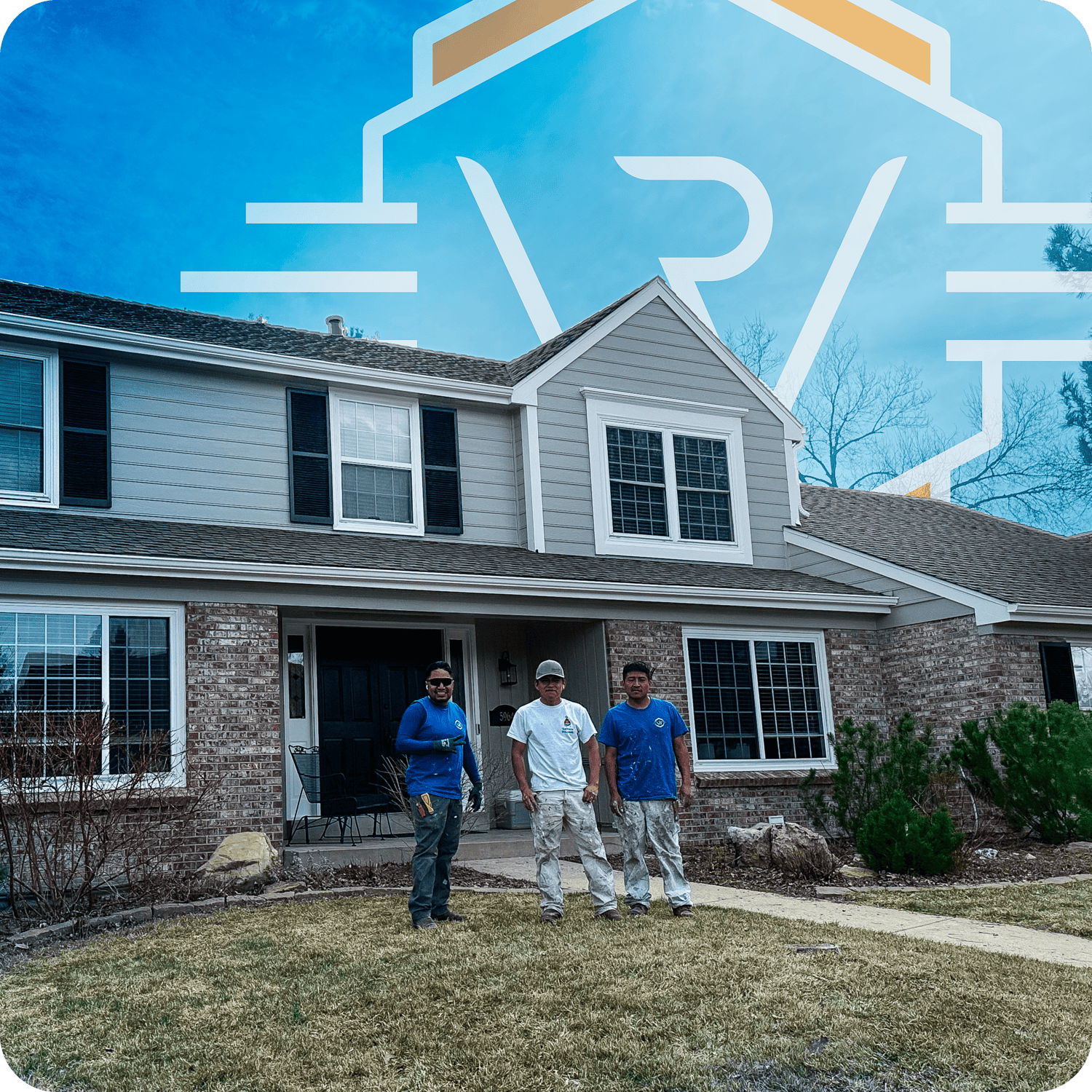
A day with a painting crew is structured, technical, and built on quality steps you might never notice—but will always benefit from. Prep, application, cleanup, and walkthroughs aren’t optional; they’re what separate lasting finishes from fast failures.
Hiring a professional crew isn’t just about a fresh coat of paint. It’s about protecting your property, extending the life of your investment, and enjoying a flawless finish that holds up for years.
If you’re ready to see the difference firsthand, contact our team for a consultation in Castle Pines, CO. We’ll show you exactly what goes into a painting crew’s honest day—no filters, no shortcuts, just lasting results.


